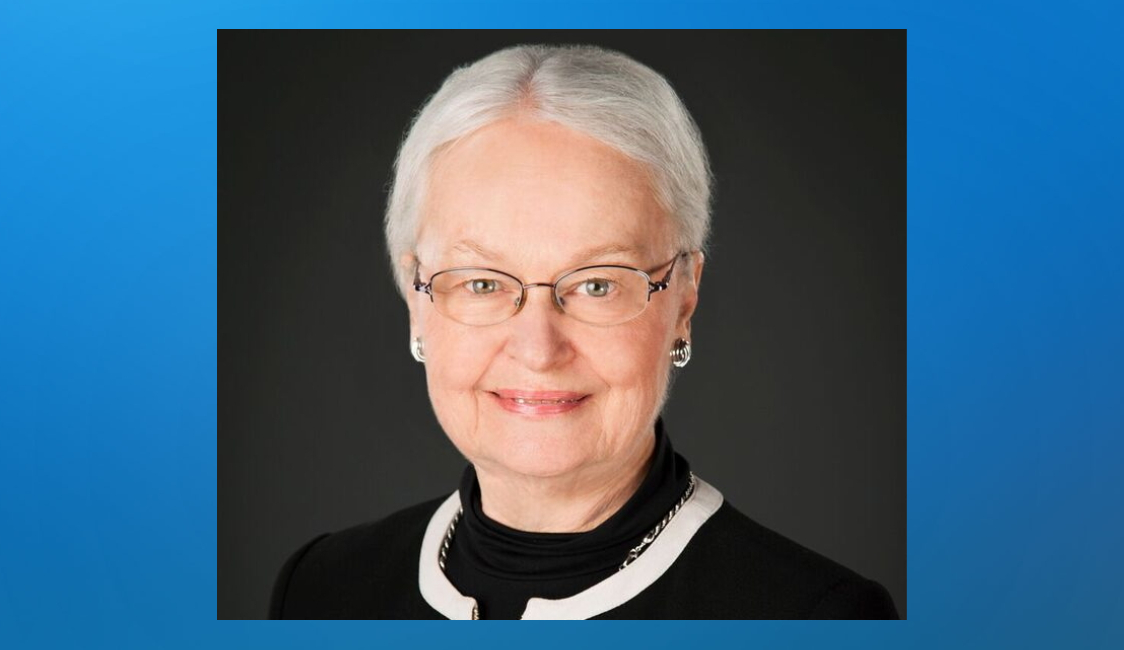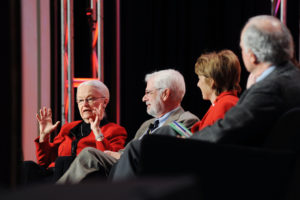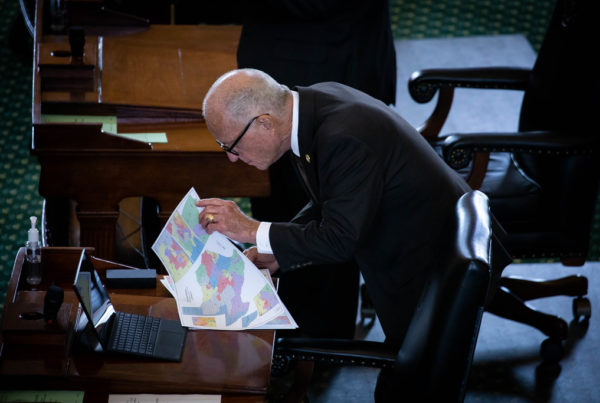Former University of Texas at El Paso President Diana Natalicio died on Friday at age 82. Natalicio spent her career fighting for equal access to higher education, and much of that work was done during her more than four-decade tenure at UTEP. She served as UTEP’s president for 31 of those years.
Under Natalicio’s leadership, UTEP’s student population grew, and much of that growth was among Hispanic students. Natalicio had wanted the university’s student population to be a reflection of El Paso County itself, since that’s where most of its students come from.
In 2018, Natalicio told Texas Standard why she stayed in her position at UTEP for so long and what still needs to change in higher education.
Natalicio, far left. Courtesy American Council on Education
“I think first and foremost, it was my passion about responding to the higher education needs in this region. And then just sheer tenacity, you know? I just wasn’t going to let it go.”
“My disappointment is that our society is not making a sufficient investment in education today compared to, say, 30 years ago. And the lack of public investment in higher education, I think is really alarming, actually… the disparity between the haves and the have-nots in terms of access to higher education, which for me, I don’t know about you, but for me that was the springboard to my whole life because I was a blue collar kid myself. So fighting for that would be my advice. Fight.“
Listen to selections from Texas Standard’s interview with Natalicio in the audio player above. And listen to, or read in the transcript below, an interview with Richard Pineda, director of the Sam Donaldson Center for Communication Studies at UTEP, who worked with Natalicio for years.
This transcript has been edited lightly for clarity:
Texas Standard: Tell us a little bit about the first time you met President Natalicio. Do you remember that moment?
Richard Pineda: I do. I grew up about six blocks from the university. So my first encounter with Dr. Natalicio was much sooner than most of my contemporary faculty. I used to love to go to the library on campus. I was fascinated by the size of the university’s library, which was relatively new at that point. And she had just finished an event in the library and we crossed paths in the atrium. And I think she was curious to know what a 12 year-old was doing wandering around the university. And we chatted for a second, and that was my first encounter. She was very kind and I think she was very curious more than anything else. And she remembered that encounter, you know, about 19 years ago when I came back to campus for my interview.
It’s my understanding she’s the main reason you went back home to El Paso to teach at UTEP. Is that true?
That’s absolutely true. When I came back for my interview, so much of what’s been transformative over the course of my 18 years at UTEP was really being anchored in that window – this is post Sept. 11 and the campus was poised to not only change its internal footprint but also some of the research efforts and, in particular, the focus on transforming the institution into a Carnegie Research 1 institution. And so all of those things were happening simultaneously, and that was really intriguing to me. But what I think sold it was she knew I was from El Paso and we had this conversation about knowing me from when I was younger. And her explanation to me in talking about the growth of the institution and where she saw that trajectory headed was an emphasis on the idea that I, as somebody who grew up in El Paso and went to high school in El Paso and had a master’s from UTEP at that point, could have a substantial impact on students that looked very much like me, that were from the same neighborhoods that I grew up in, and that clinched it. The idea that she recognized the impact that I could have in a place like UTEP, which would be different than any other institution in the country really made my decision very easy at that point.
You’re probably not the only faculty member that she touched in such a way.
There are a number of faculty on campus who have connections to El Paso, who themselves either went to UTEP or, as many in El Paso, have a connection to the institution. And I think that was a huge selling point. And I think she was able to make that case. And, as you very well know, sometimes El Paso doesn’t get the best news coverage. And so I think sometimes there’s some trepidation about moving to the community. But she made it so you knew that your impact was going to be noticeable, and that you knew that what you were going to do was going to change lives. And I think that’s really how she functioned day to day. I mean, she recognized that what she was doing was not only opening the doors for first-generation students in the community, but also really setting some important milestones for Hispanic or Latino/Latina students in Texas.
You described her as transformative. But it appears she wasn’t just transformative for you, but for higher education in general.
Some of the recognition she received towards the end of her term as president: one of the most influential people on Time’s list, as well as her role just in terms of the history of the UT system as one of the longest-serving presidents, the longest-serving female president. But I think that the reason that her impact is so across the board and I think really sets the standard is because she focused on the idea that access and excellence could be delivered in the same mission, and recognized that for a community like El Paso or any community where you’ve got a university, that the university has to play a part of the community. It has to not only be aspirational for the people in the community, but it also has to welcome people in the community. So simultaneously, while we were working on research funds and student enrollment, she was also committed to making sure that the university was a gateway to the arts, that it was a gateway to intellectual space for the community. And I think that was really important. I think that’s one of the reasons why when this news broke on Friday, there was so much sadness across the community. Because the recognition of somebody who had opened so many doors, literally and figuratively, for people in the El Paso community, had passed on.














